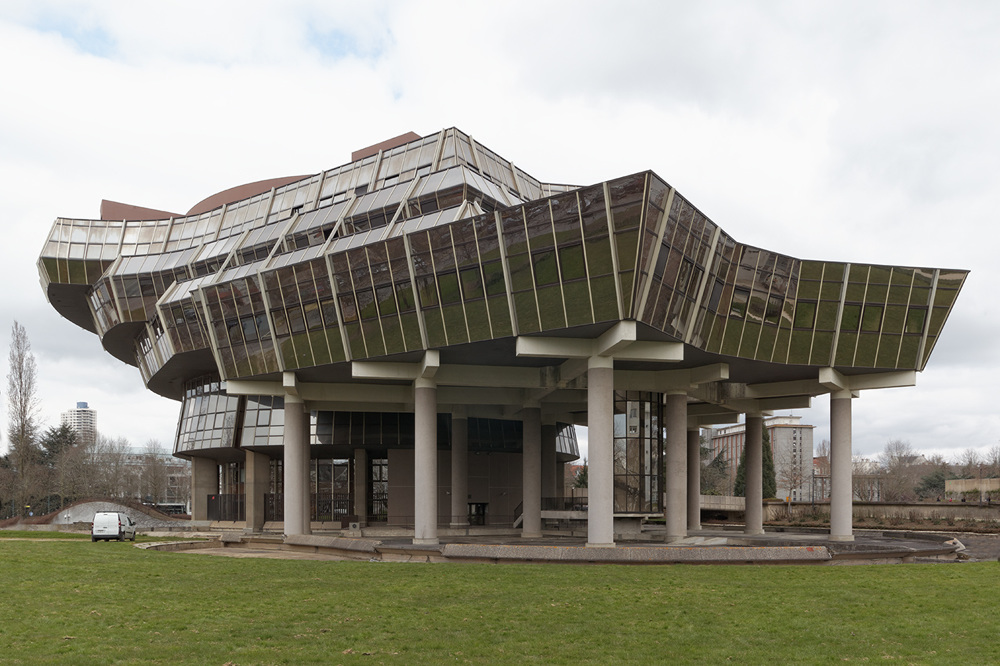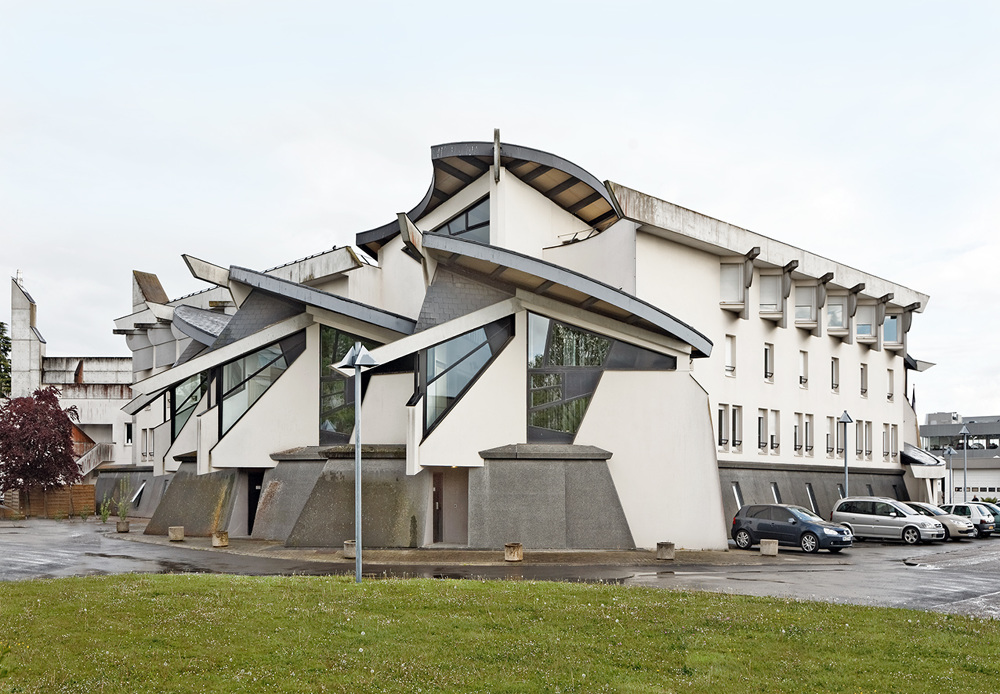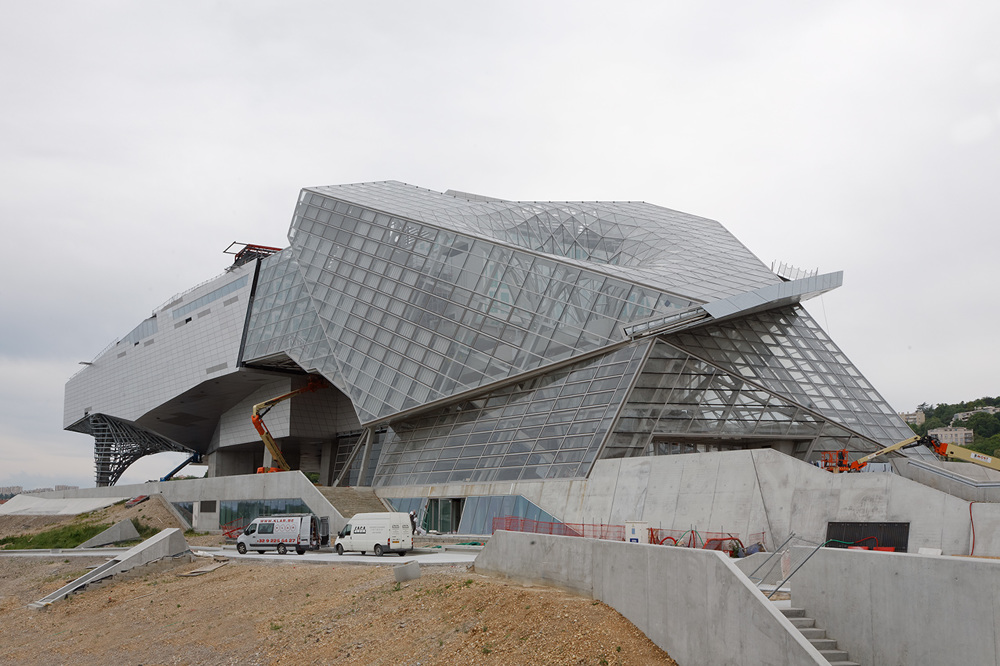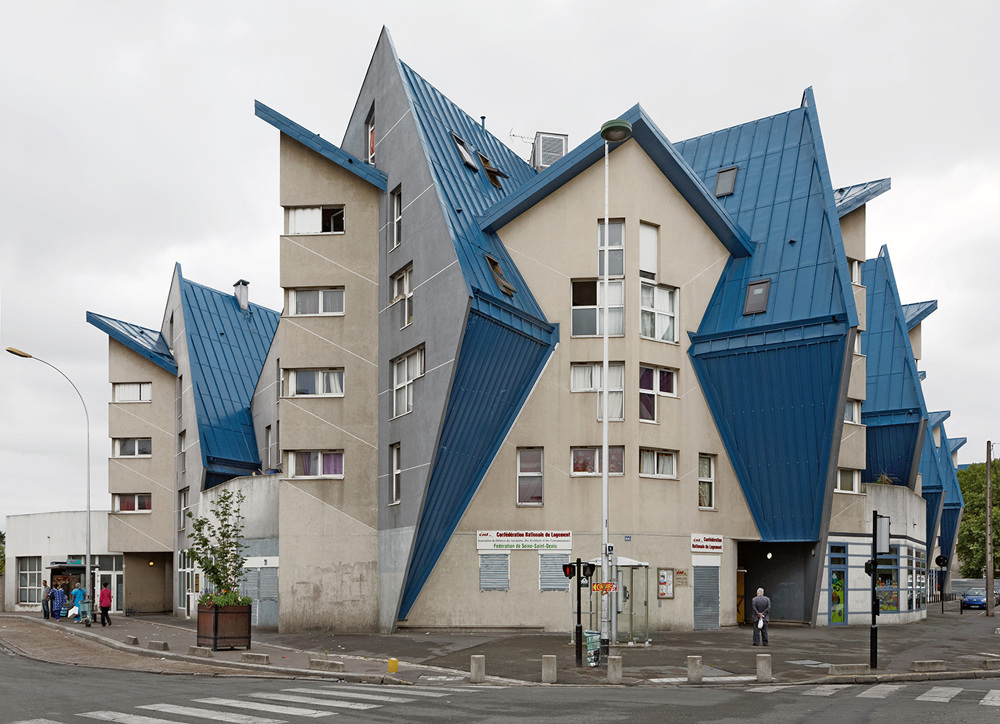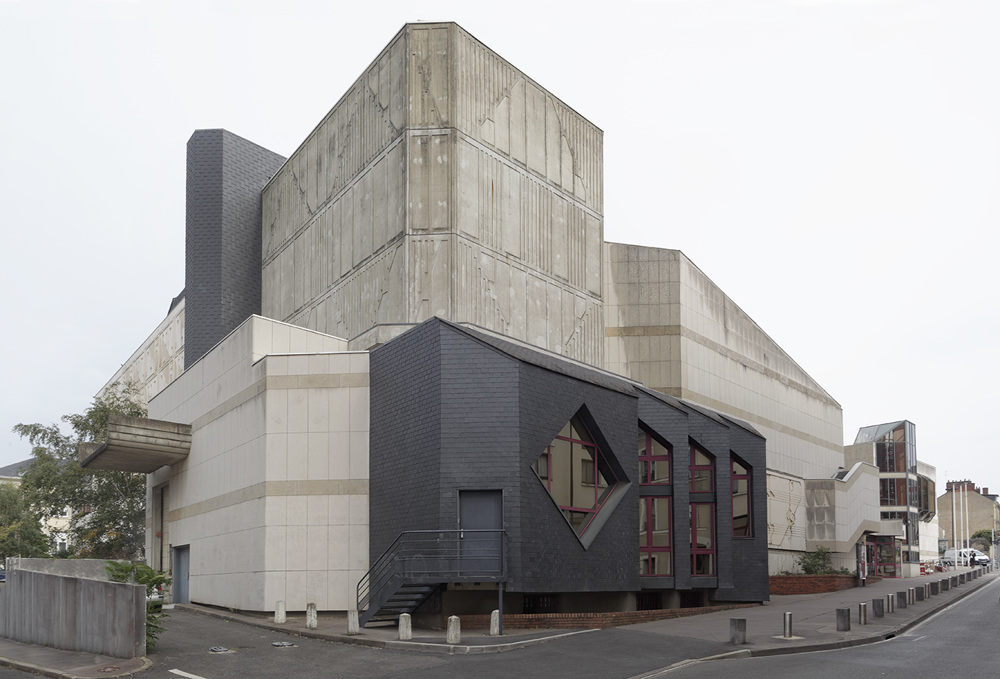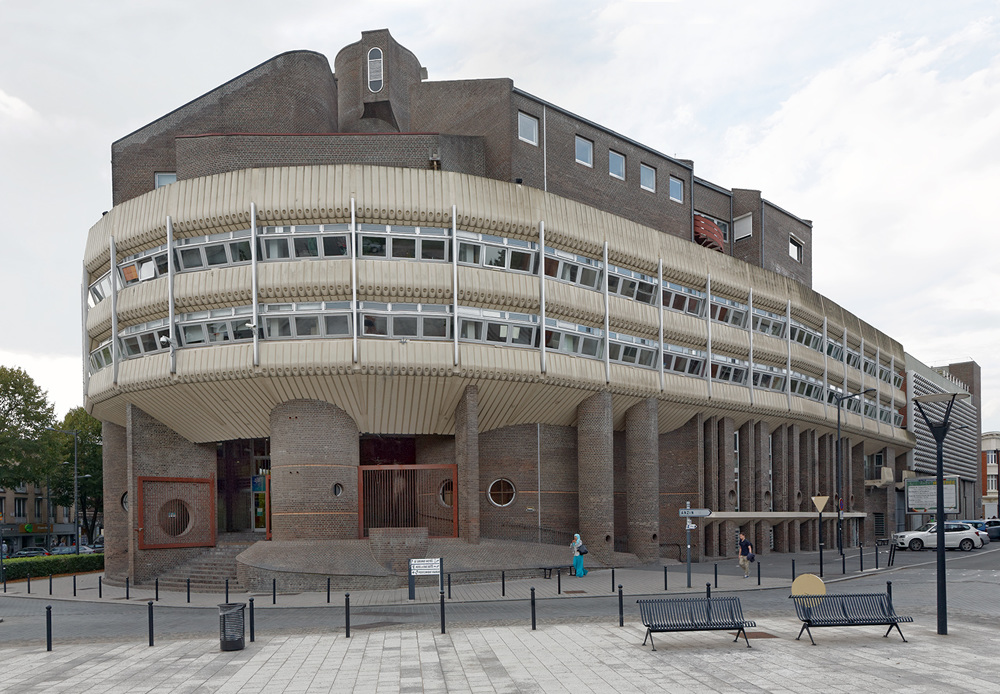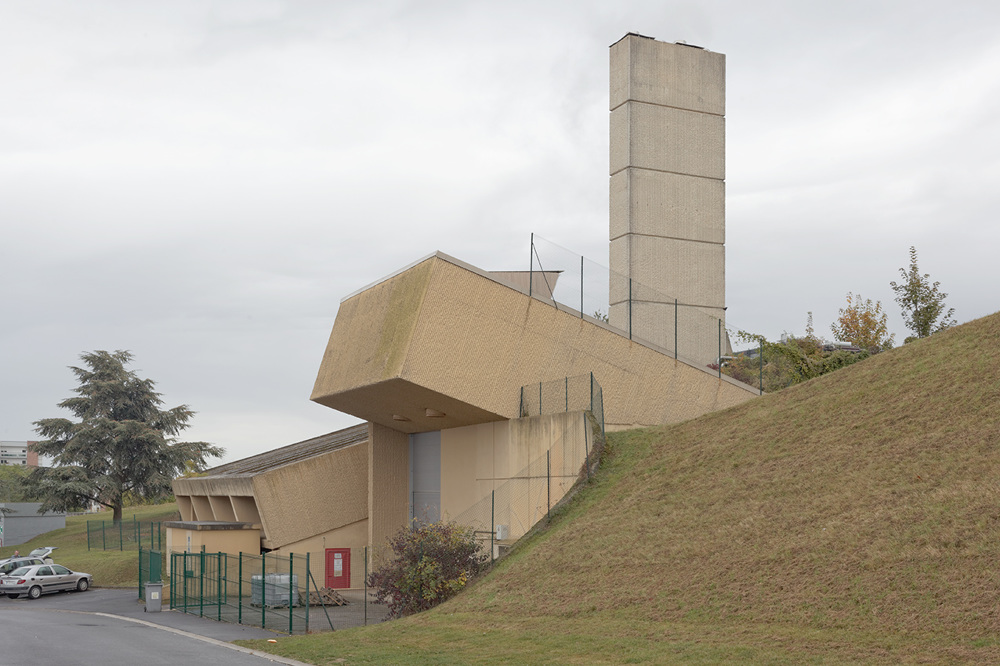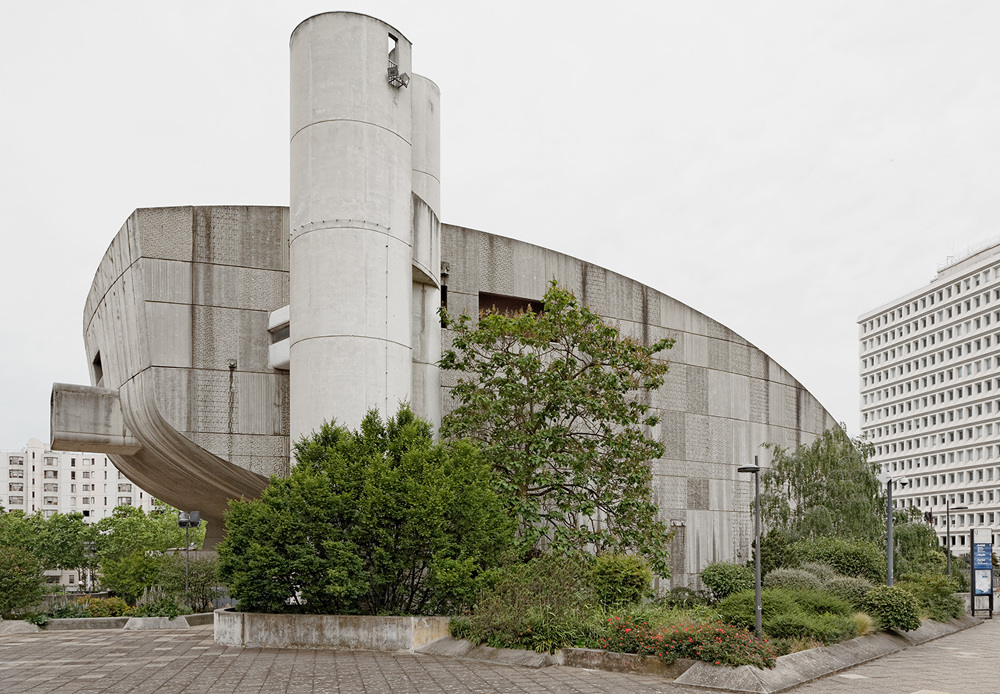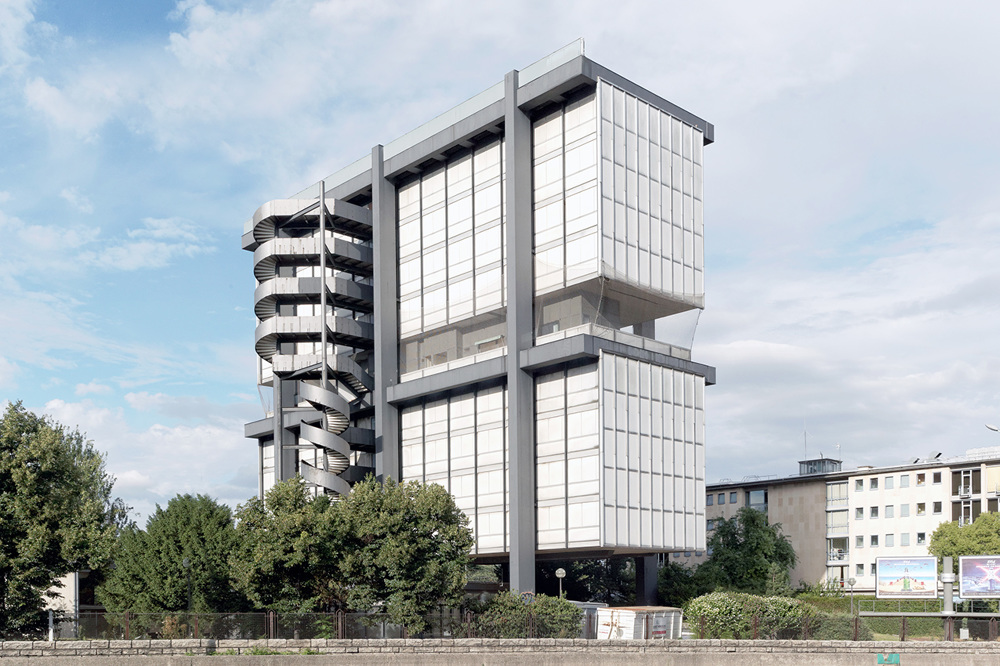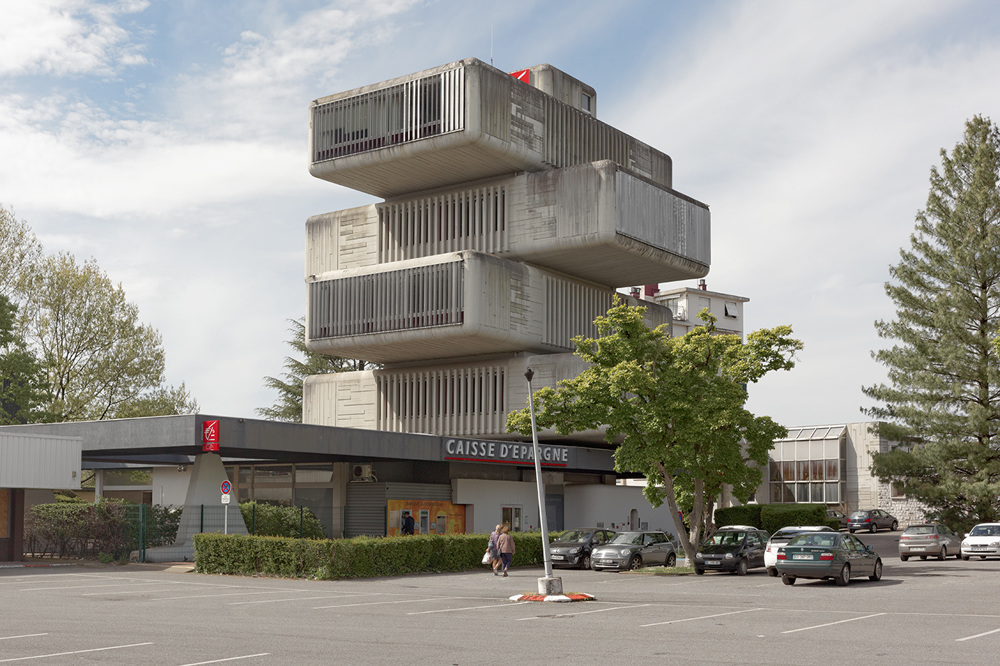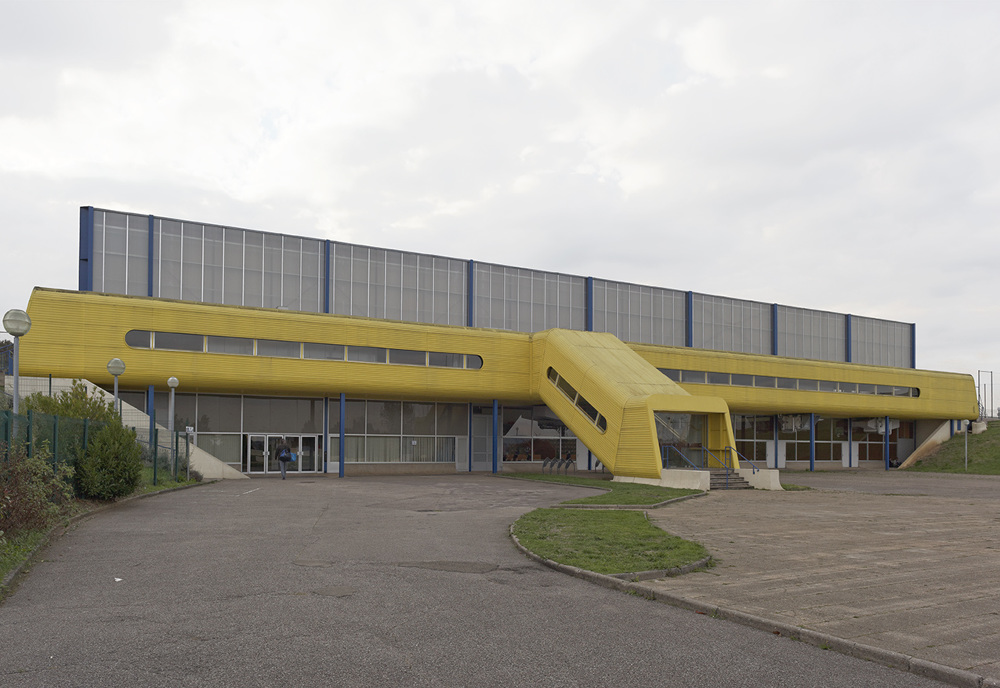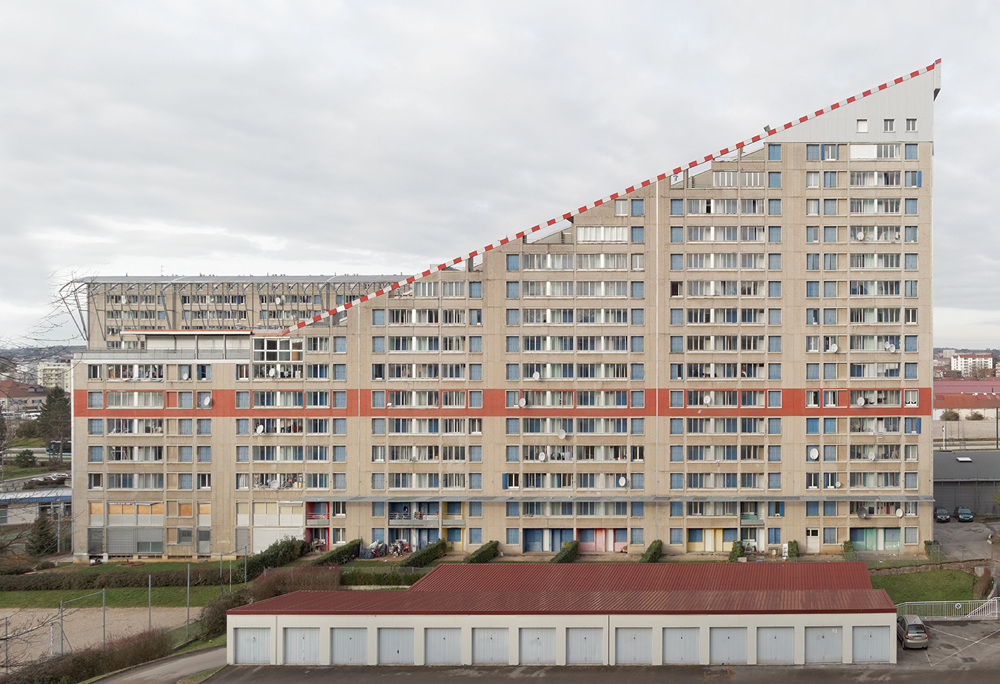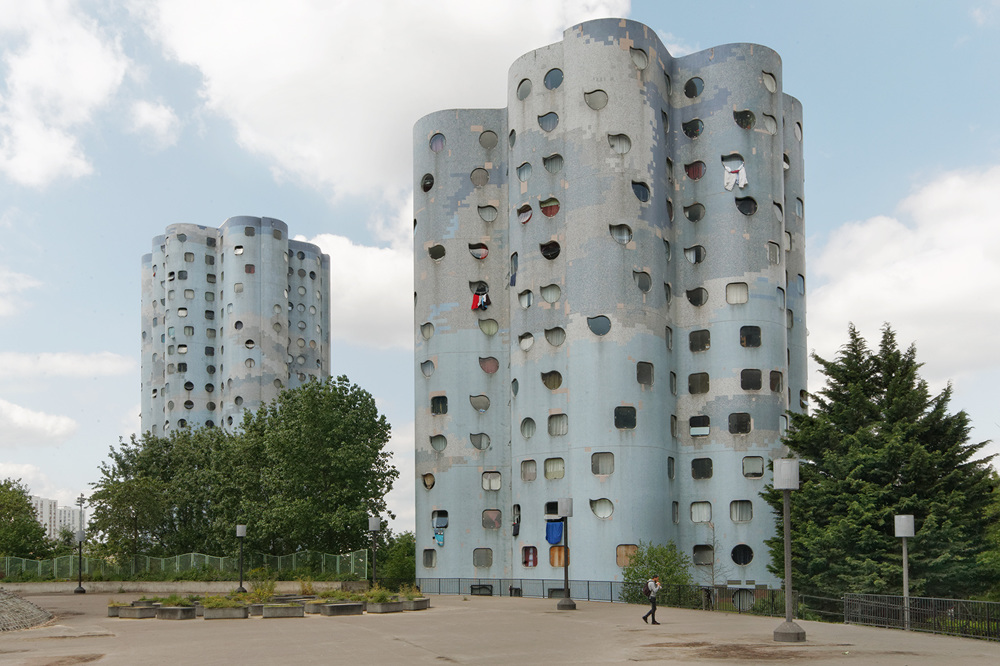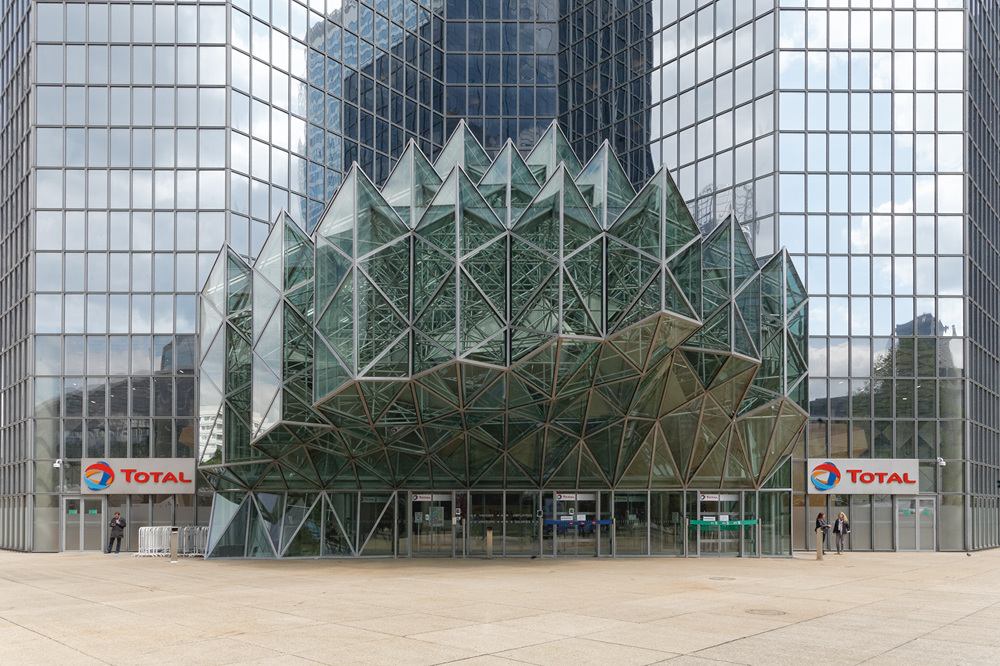Eric Tabuchi takes portraits of buildings, showing them in isolation so we can best wonder why, how and who made them? Place his images side by side and you construct ideas of what we are now. It’s diverse. You think you know what Eric’s native France looks like and then – bam! – Eric shows you the things those oh-so civilised French build to live in and around. It’s not all cobbles, je ne sais quoi and gargoyles. The place isn’t all dipped in aspic, a working museum illuminated by the occasional car-b-cue when the youth strive to remind us that not everything vibrant about the country is dead and dust-jacketed, or living in London. There’s not all that much high culture, soigné chic, constructed rudeness and adroitness to envy, sketch and flirt with in this new-build France. It’s just there. It’s brutal and easy to miss. Eric makes us look.
It turns out that people in France have all sorts of ideas beyond preservation. They’ve still got nerve and daring. Just look at these buildings. Someone dreamt these things up, lots of other people thought them a good idea and workers set about constructing the things. Introduced to ideas of the stories behind these huge burps of cement and glass, the places become human.
“It may seem like a provocation, but I am not particularly interested in architecture – at least not in that of great architects and cult buildings,” says Eric. “I’m interested in what humans build, whether for shelter, work, recreation or worship. Basically, what has captivated me for 20 years is the vast domain of anonymous architecture, which is the daily environment of most of the inhabitants of this planet, and which we do not look at it so much. It appears to us without any real quality.”
He’s not kidding:
See more of Eric’s great work in his books Atlas des Regions Naturelles , Twenty-Four Modern Lorraine Churches and at his website. Atlas des Régions Naturelles is at www.atlasrn.fr.
Would you like to support Flashbak?
Please consider making a donation to our site. We don't want to rely on ads to bring you the best of visual culture. You can also support us by signing up to our Mailing List. And you can also follow us on Facebook, Instagram and Twitter. For great art and culture delivered to your door, visit our shop.




